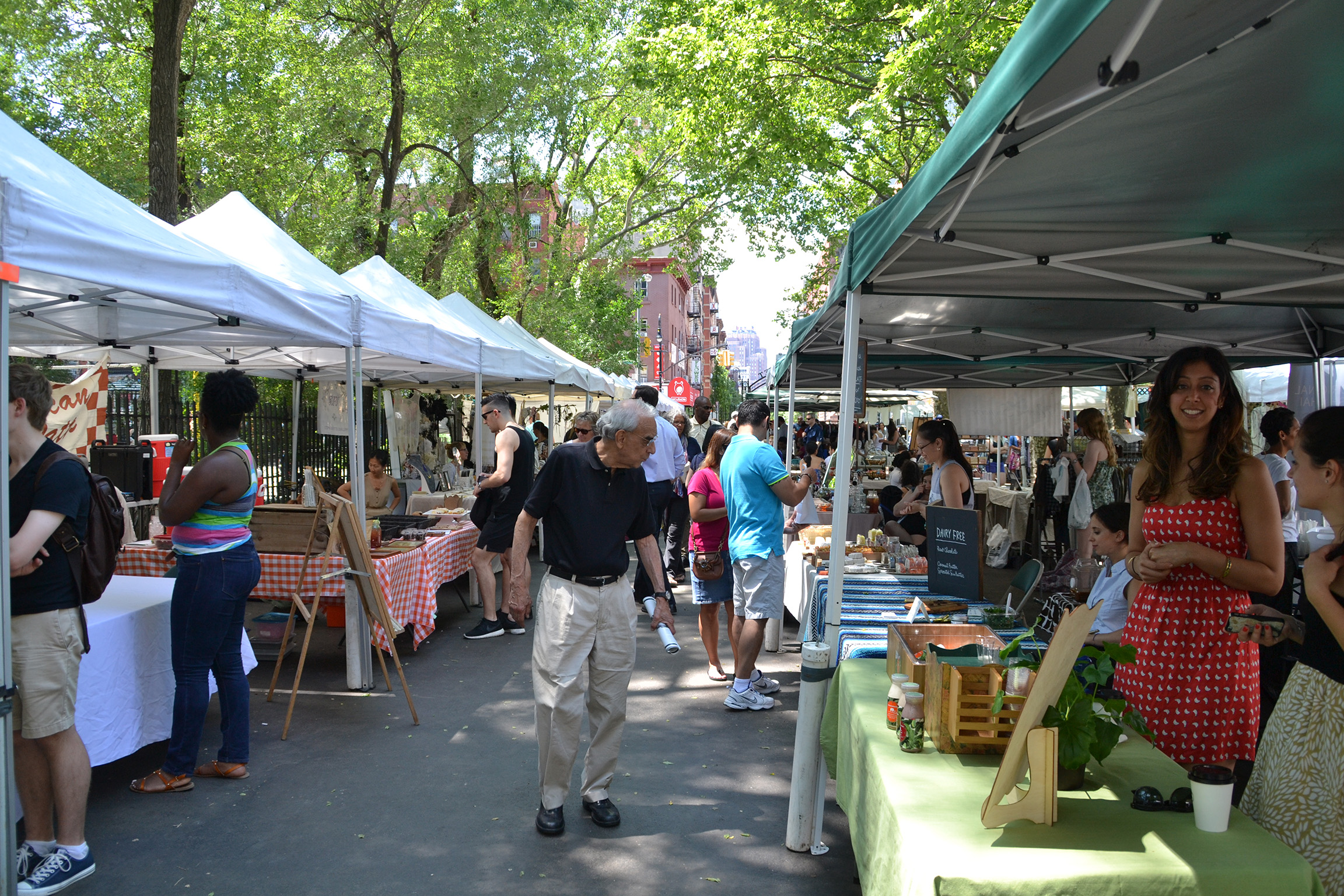Reflecting on today’s markets

The need for public markets today: the experience of Project for Public Spaces
Dottoranda, Dipartimento di Architettura, Università degli Studi Roma Tre
[Cover: New York City, June 2014. ©Sara Caramaschi]
Rooted in the work of William H. Whyte[1], the Project for Public Spaces advises cities across North America as well as abroad, with special emphasis on citizen participation and transformation processes. Over the past 27 years, PPS has completed projects in more than 1000 communities throughout the world and has become widely known for its innovative approach to community planning and revitalization.
Long recognizing the catalytic role that public markets can play in community development, PPS created the Public Market Collaborative Program[2] in 1987: the collaborative promotes the preservation and establishment of markets through technical assistance and educational programs in market development, design, and operation.
Despite the changes in society and in cities that led to the decline of public markets, many cities around North America have maintained historic markets or developed new ones as important public spaces, incubators of food entrepreneurship, and showcases for locally grown or produced foods. Today, public markets are making a comeback in American and Canadian contexts, because they can effectively address some of the vexing problems of the contemporary city: the need to reinvigorate urban shopping districts and make inviting and safe public spaces; the need to support small-scale economic activity and confront the problems of street vending; the need to provide fresh-quality produce to inner-residents and the need to protect open space and preserve farming around cities.
–[New York City, June 2014. ©Sara Caramaschi]
In evaluating thousands of public markets around the world, Project for Public Spaces identifies six sets of benefits generated by public markets. Markets are important elements of the economy, particularly in relation to independent retailing, local employment and business start-up opportunities, providing important sources of income generation for significant numbers of people. While functioning as commercial places for local communities, markets offer contexts for intergenerational encounters and for the exchange of information and possibilities, bringing together diverse people. In this sense, they represent significant public and social spaces for different groups, sites for vibrant social encounters, social inclusion and for mediating differences. Markets clearly would not function as social spaces if they did not succeed as places of trade and consumption; thus, they need to provide a diversity of products of good quality and value.
Markets promote attainable healthy eating by offering a wider range of affordable food using their role as community hubs to promote healthy eating and lifestyles, increasing standards of living for some groups, especially in low-income communities and food deserts[3]. In addition to creating an alternative to the mainstream commercial food system, public markets can generate a range of community benefits, including small business opportunities, preservation and promotion of local foods and food ways, and a forum for public interaction.
Today, despite their numerous benefits, many public markets face serious challenges due to insufficient recognition in policy, research, and funding. Many cities do not have appropriate policies or resources to invest in basic maintenance and sanitation, to expand or create new markets, or to manage public spaces effectively to integrate market activity. Other public markets have been demolished or displaced for new development, or allowed to deteriorate as local public authorities have favored the development of large supermarkets and shopping malls. Project for Public Spaces works with communities to help develop a clear vision for the market, identifying achievable goals, testing and refining the vision through a rigorous feasibility assessment. Moreover, their unique placemaking[4] experience provides the opportunity for the community to envision its market, thanks to the translation of the vision into specific recommendations.
The daily commercial exchange that forms the heart of public market systems offers powerful opportunities for transforming cities and metropolitan areas across the globe into thriving, sustainable, and socially cohesive places. Markets transform streets, plazas, and parking lots into lively people places, alive with vitality and commerce, bringing consistent activity to public spaces. Public markets are valued because they offer common ground in the community, a place where people feel comfortable to mix, mingle, and enjoy the serendipitous pleasures of socializing, people watching, and shopping in a special people-focus environment.
If we look closely at some contemporary trends, such as changes in eating habits and preferences, increasing concern over where the food comes from, the decline of big-box grocery store sales, we might see a growing desire for urbanity and connectivity. People are looking for a place to gather and to participate, rediscovering that markets, thanks to their emphasis on locally grown, locally made wares and locally owned business, accentuate the qualities that make their communities special.
[1] William H. Whyte (1917-1999) is the mentor of Project for Public Spaces because of his seminal work in the study of human behavior in modern cities. While working with the New York City Planning Commission in 1969, Whyte began to wonder how newly planned city spaces were actually working out – something that no one had previously researched. This curiosity led to the Street Life Project, a pioneering study of pedestrian behavior and city dynamics. While the core of Whyte’s work was predicated on the years he spent on direct observation, he authored several texts about urban planning, design, and human behavior in various urban settings, including: The Exploding Metropolis, 1958; Cluster Development, 1964; The Last Landscape, 1968; The Social Life of Small Urban Spaces, 1980; and City: Rediscovery of the Centre, 1988.
[2] More info can be found on Project for Public Spaces’ platform http://www.pps.org/markets/.
[3] Food deserts are parts of the US country vapid of fresh fruit, vegetables, and other healthful whole foods, usually found in impoverished areas. This is largely due to a lack of grocery stores, farmers’ markets, and healthy food providers.
[4] The extreme population growth and migration, together with some social issues such as alienation and insecurity have caused concern on how to ensure social sustainability and urbanity in contemporary cities. Various approaches that contribute to human relations and increase the quality and perception of life and space, by developing of social cohesion, matured. Placemaking emerged in the 1960s and its spatial applications are grown up in different scales of the places. On the one hand, while it’s been supported (Burton et al., 2010; Shibley, 2003), on the other hand it has some critics (Mehta, 2012; Bedoya, 2012; Zukin et al., 2009). PPS suggests that placemaking is not design driven and project focused, but it emphasizes its community driven aspect.







